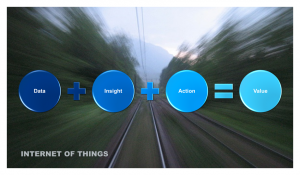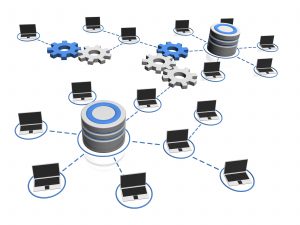Recently, I had an opportunity to participate in an analyst briefing around the Internet of Things (IoT). During the review, a chart was shown to summarize the status of IoT projects in the manufacturing sector. I wasn’t surprised by the varying degree of “completeness” of IoT projects across this industry, but I was struck by a follow-up question regarding which vendors they plan to partner with over the next 12-24 months to execute projects in this space. That list was heavily slanted towards traditional telecommunications and network providers, without any real contenders in the analytics space. At first, I didn’t think much of it. One of the required steps in executing IoT projects is to connect your devices, and since many manufacturers are still in the early phases of planning and execution, I wasn’t really surprised. However, after giving this chart additional thought, I started to wonder… is this really a function of the project lifecycle? Or does this tie back to a perception issue around IoT?
To help shape my perspective, I reached out to a few of my peers in this space to discuss their reaction to this question. Like most topics related to the Internet of Things, I received mixed opinions, but there did seem to be significant variation related to what IoT projects actually entail, which may shed some light on the responses to the survey question. During these discussions, I kept coming back to the question of “why” organizations are embracing IoT. I don’t think it is a stretch to assert that in almost all cases, it likely ties back to perceived benefits they will gain in terms of operational efficiency, cost reduction, competitive advantage, etc. So at the end of the day, IoT is not about the Internet or the Things, it’s about the data the things generate and how that data can be translated to VALUE!
 So if the end goal is to drive value, how is this actually achieved? With a disclaimer that my background is in asset performance management, I tend to break things down in terms of the basic building blocks of a condition monitoring system --- COLLECT > TRANSPORT > STORE > ANALYZE > VISUALIZE > DECIDE > ACT. It can be summarized in different ways, but I have always gravitated towards this definition because it is simple and shows the progression required to achieve full business value. The collection, transport and storage of data is simply the beginning. It provides the foundational technology required to enter into the IoT arena, but by itself doesn’t help organizations achieve their goals. To achieve the positive outcomes desired, appropriate decisions and actions need to be taken. And decisions aren’t usually made from raw data!
So if the end goal is to drive value, how is this actually achieved? With a disclaimer that my background is in asset performance management, I tend to break things down in terms of the basic building blocks of a condition monitoring system --- COLLECT > TRANSPORT > STORE > ANALYZE > VISUALIZE > DECIDE > ACT. It can be summarized in different ways, but I have always gravitated towards this definition because it is simple and shows the progression required to achieve full business value. The collection, transport and storage of data is simply the beginning. It provides the foundational technology required to enter into the IoT arena, but by itself doesn’t help organizations achieve their goals. To achieve the positive outcomes desired, appropriate decisions and actions need to be taken. And decisions aren’t usually made from raw data!
During the SAS Global Forum 2015, Jim Davis, SAS Executive VP and CMO, argued we should be talking about the “Analytics of Things”. The premise is that organizations should be thinking not only about having devices connected and communicating to each other, but consider “why” they are talking to each other and what intelligence can be gained. Organizations need to ensure they are focused on evolving their storage and analytical platform strategies so they are positioned to take advantage of new, emerging data streams.
Looking at IoT projects from the life-cycle perspective may have shaped organization’s first response to the partnership question. I would assert that is a flawed viewpoint. Organizations should start with a value proposition that aligns to one of their business challenges or goals. Think about what information/insight is required to address it, and then work backwards to determine the required data to support that vision. Those organizations that embark on IoT with a data first mentality will likely suffer from increased storage costs, extended time to value and increased risk. So I challenge organizations to start with an analytical focus and align their data strategy to it… not the other way around.
Thoughts? Let the debate begin!

